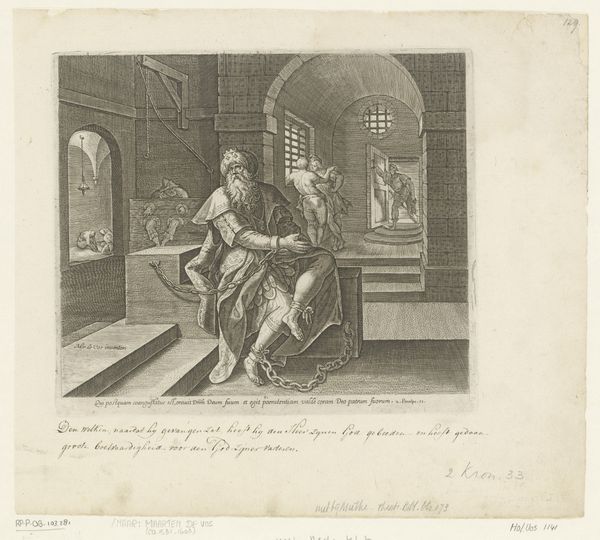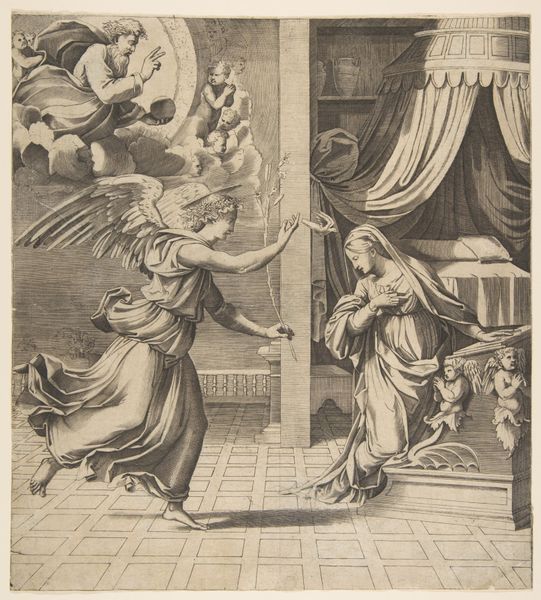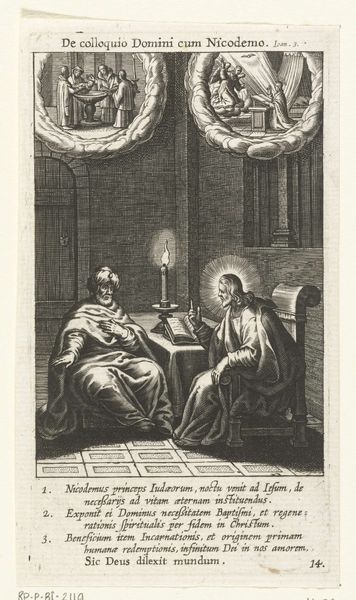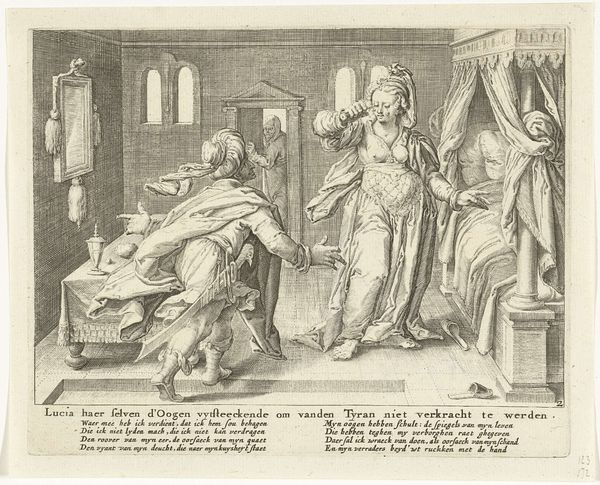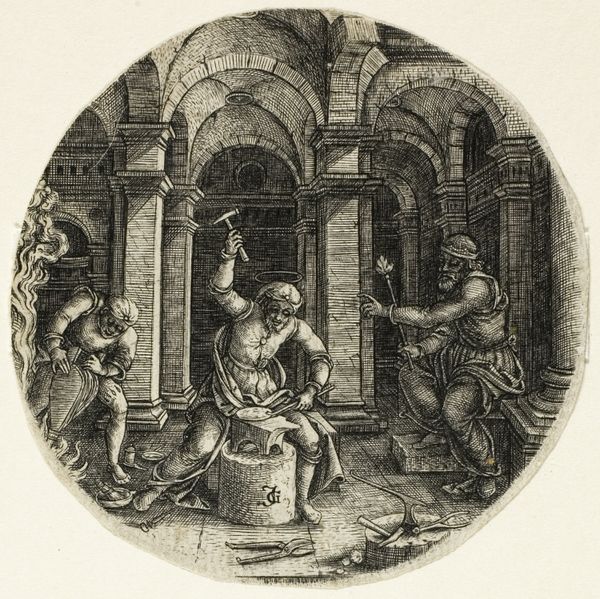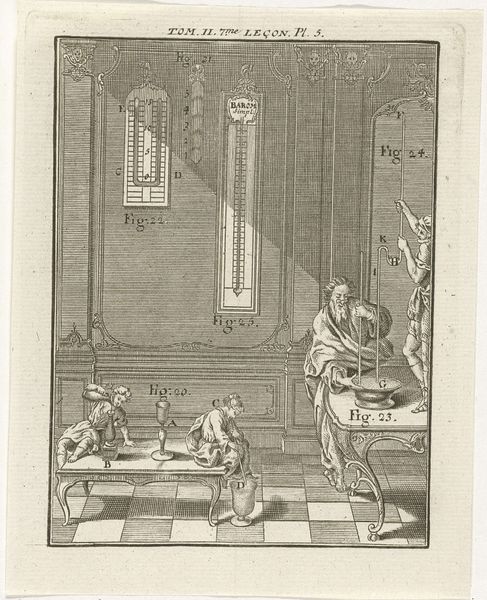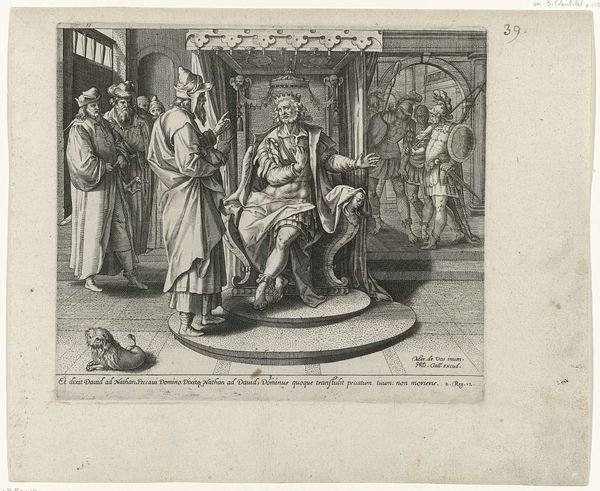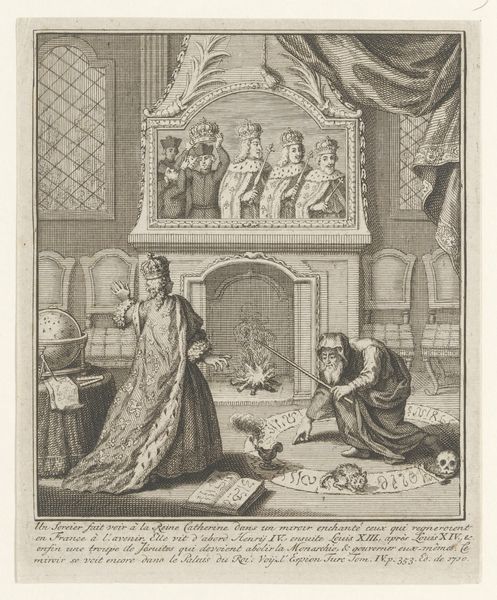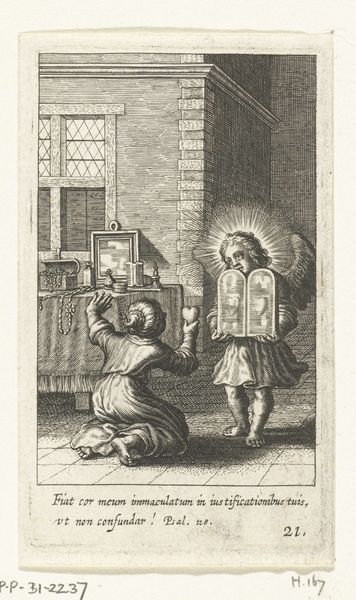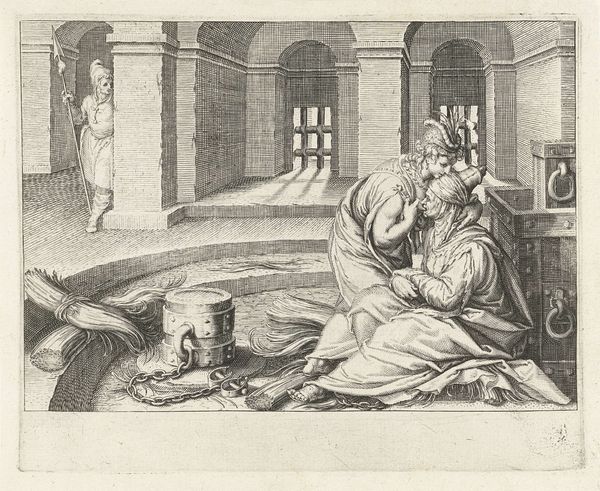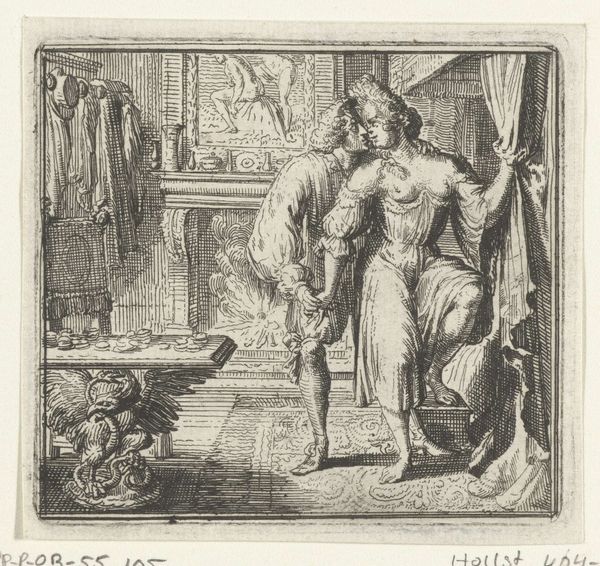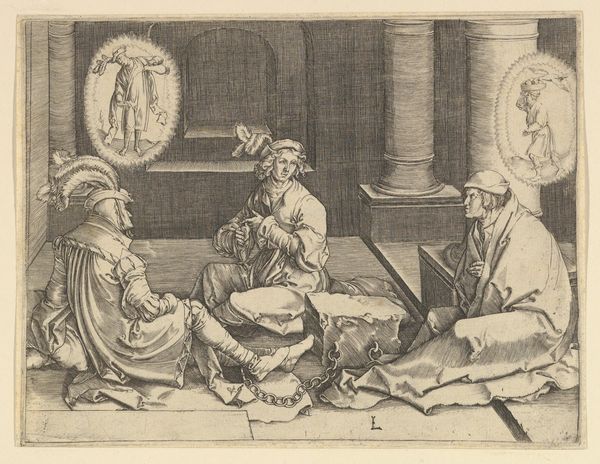
Phaëthon vraagt zijn vader of hij in diens zonnewagen mag rijden c. 1636 - 1670
0:00
0:00
#
pencil drawn
#
toned paper
#
light pencil work
#
pencil sketch
#
old engraving style
#
personal sketchbook
#
pen-ink sketch
#
pencil work
#
watercolour illustration
#
pencil art
Dimensions: height 163 mm, width 218 mm
Copyright: Rijks Museum: Open Domain
This print at the Rijksmuseum was made by Crispijn van de Passe the Younger, sometime before his death in 1670. The scene is dominated by a classical interior, divided into two distinct zones. On the left, we see a complex of arches and statues, constructed with orthogonal lines receding into the distance. To the right, a raised platform leads the eye to a majestic figure, bathed in radiant light. Phaëthon kneels on the checkerboard floor, positioned at the intersection of these contrasting spaces. The composition uses precise geometry to create a sense of depth and order, reflecting the period’s interest in rational structure. However, the content subverts this stability. Phaëthon's vulnerable posture contrasts with the idealized, god-like figure of Apollo, highlighting the tension between human ambition and divine authority. The print sets up a semiotic system of signs – the checkered floor symbolizing the rational world, the radiant light representing divine power. Ultimately, the artwork invites us to consider the interplay between order and chaos, ambition and limitation, reflecting broader philosophical concerns about human nature and the cosmos.
Comments
No comments
Be the first to comment and join the conversation on the ultimate creative platform.
